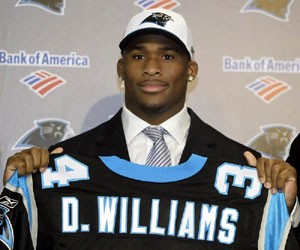Wait ’til this year.
As far as teases are measured, the University of Memphis football program couldn’t have picked four more tantalizing words than their marketing slogan for 2014. The Tiger fan base is accustomed to waiting: It’s been five years now since a bowl appearance, and six seasons since a winning campaign (7-6 in 2007). And it’s been worse in the recent past: eight consecutive losing seasons from 1995 through 2002. If you’re counting — and we have to include the 2-10 mess of 2006 that ended a three-year winning streak — that’s 15 losing football seasons over the past 19. Memphis football fans wait. And wait.
Until this year?
The first step in this process — for Tiger players, coaches, and fans — is putting the dreadful end to last season behind for good. Sorry to open the wound, but to summarize: After winning three games and losing four others by less than eight points, the Tigers were declawed in their last two (a 41-25 loss to Temple at the Liberty Bowl and a 45-10 drubbing at UConn). These are not the kind of memories that help an off-season. To a man, the Tiger players say they have put those losses in history’s dustbin, but within motivational reach.
“[Those losses] motivate the team a lot,” says senior cornerback Bobby McCain, one of the potential team stars who will determine how quickly the lingering memories can be erased. “We wanted to finish strong, and we didn’t. Mentally, physically, emotionally, we just weren’t there. It was somewhat fatigue. But morale had shifted. We knew after the Louisville game, there would be no bowl game. We have to do better. That’s not a good look.”
“Let’s just scrap that [2013 season],” adds senior tailback Brandon Hayes, back after being granted a sixth year of eligibility by the NCAA. “We could have had a much better season. We’re taking Austin Peay [Saturday] first, not looking ahead. If we start looking ahead at UCLA [September 6th], who knows what might happen?”
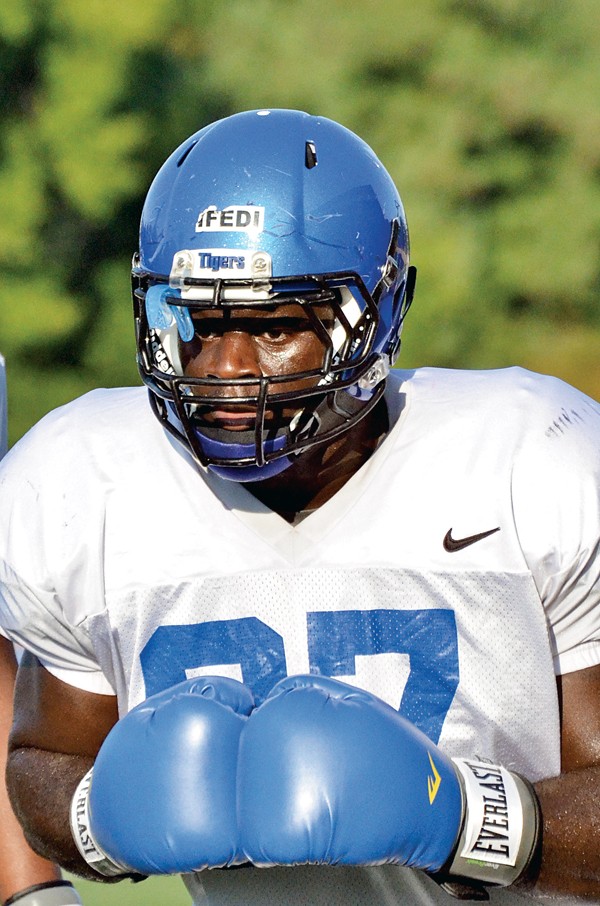 Larry Kuzniewski
Larry Kuzniewski
Defensive end Martin Ifedi leads a veteran Tiger line
The 2014 Tigers will be a veteran team. (It’s been a while since those words were written.) In addition to familiar faces in the offensive skill positions — we’ll get to those later — the Tigers will have a defense built around three players with more than 20 career starts (defensive end Martin Ifedi, linebacker Charles Harris, and McCain) and four more with at least 12 (linemen Ricky Hunter and Terry Redden, linebacker Ryan Coleman, and cornerback Andrew Gaines). This is a unit that, through 10 games last season, ranked 16th in the country in total defense (and 23rd in points allowed). Of course, it’s a defense that — after the blowouts against Temple and UConn — fell to 39th in the country (44th in points allowed). Coach Justin Fuente, defensive coordinator Barry Odom, and an entire fan base are betting on that 10-game sampling being the real deal, and those final two an ugly anomaly.
“We showed last season that we can compete against any team we line up to play,” says the senior Ifedi, a candidate for the Bednarik Award (given to the nation’s top defender) and the Lombardi Award (top lineman or linebacker). “No matter the name — Louisville, UCF — we were close. We just fell short.”
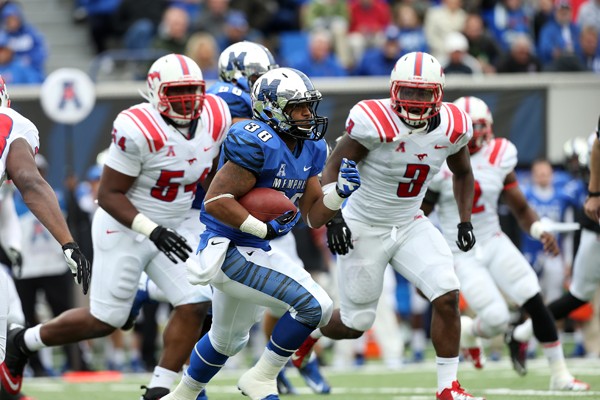
Senior tailback Brandon Hayes and cornerback Bobby McCain (21) will play prominent roles for Coach Justin Fuente
Ifedi enters the season one sack shy of the Memphis career record (Tramont Lawless had 21 from 1996 to 1999), and he isn’t shy about the preseason recognition he’s received or the thought of improving on his sack total of a year ago (11.5). “When I got here as a freshman,” he says, “I thought about that sack record to myself, jokingly. But now it’s reality. It will be a big accomplishment for me. I need to dominate every game, play up to my ability. I want to win one of those awards; show the nation and the conference that I’m definitely one of the best.”
Says Fuente, “[Martin] has got to be a really good player on a good defense that, in turn, becomes a good football team. Then he’ll get every accolade he deserves. If you start freelancing, that’s when you struggle. I don’t think he’ll do that.”
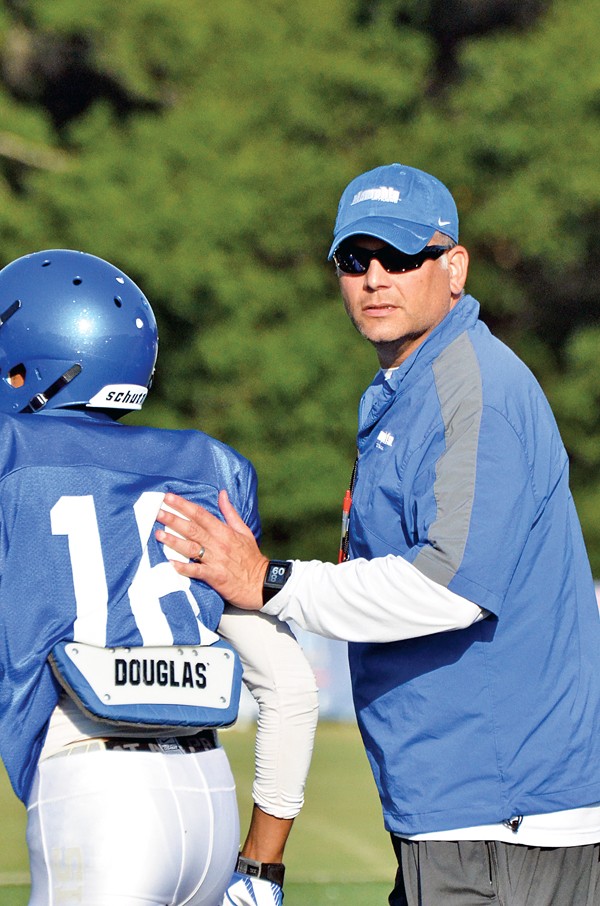 Larry Kuzniewski
Larry Kuzniewski
Coach Justin Fuente
Ifedi should combine with Redden and Hunter to give Memphis one of its strongest defensive lines in years. Add freshman Ernest Suttles to the group — Suttles impressed Fuente with his off-season work — and Memphis, dare we suggest it, has depth on the defensive front. “Terry Redden’s as good a defensive player as we have,” says Fuente. “When he’s in there, it’s a different ball game, because you can’t single-block him.”
“We have high hopes and high expectations for the defense,” says McCain, who led the Tigers with six interceptions (in just nine games) last season, the most by a Memphis player in 12 years. “We want to have a chip on our shoulder, to have the game in our hands in the fourth quarter.”
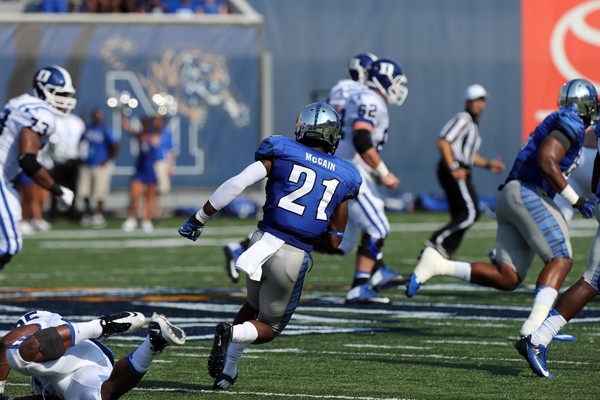 Joe Murphy
Joe Murphy
Bobby McCain
McCain and Gaines will be joined in the secondary by two more upper-classmen: safeties Reggis Ball and Fritz Etienne. McCain sees his unit as a complementary piece to the line and, not incidentally, the linebackers. (The Tigers’ hardest hitter may be senior linebacker Tank Jakes.) “You can win ball games by cutting down on big plays,” says McCain. “The three units work together well. We know we’re going to get pressure from the front seven. And if we’re leading in the fourth quarter, they’re gonna throw the ball.”
The Tiger schedule is packed with game-changing quarterbacks, ready and able to stretch the field early and late: UCLA’s Brett Hundley, Houston’s John O’Korn, Temple’s P.J. Walker. Will Ifedi and friends be able to reduce the time these signal-callers have to gaze down field? And will McCain and friends be able to pounce once the ball is in the air? These are questions that, when answered, will determine how close the U of M may be to bowl eligibility.
 Larry Kuzniewski
Larry Kuzniewski
Paxton Lynch (in red) and Brandon Hayes offer hope from the Tiger backfield.
There will also be familiar faces on offense, but Fuente cautions against using the same “veteran” tag his defense has earned. “I worry about the balance,” he says. “[The defense and offense] are two different groups. An older, veteran group on defense, but still a young group offensively, if you look at them as a whole. There are guys who have played, but they’re still young. We don’t have to pull them right out of high school and put them on the field anymore. But there’s a different balance there.”
Hayes will provide leadership from his tailback position, and there’s probably no player on the Tiger roster more grateful to be in uniform for the 2014 season. Having gone through the standard farewell rites of departing seniors last fall, he learned during the off-season that the NCAA had awarded him a sixth year of eligibility (in addition to a redshirt season, Hayes missed the 2010 campaign with a knee injury). He’s climbed his way to the top of the running back depth chart with a work ethic Fuente has cited as an example for two years now.
“It’s a blessing,” says Hayes. “I told myself that if I get a year back, I’m going to train differently, eat differently. I’ve got my body right, up to 210 pounds [from 198]. A lot of speed work, a lot of hills; working on my breakaway speed. I need to finish runs better. What might be a 26-yard run, I need to make it 56. Or if it’s 35, I need to take it the whole way.”
Of course, for the Tigers to succeed, the inspirational components of Hayes’ story need to translate to the field. After leading the team in rushing in 2012 (576 yards), Hayes ran for 860 yards last season and carried the ball 201 times without fumbling. He aims to become the first player since DeAngelo Williams (2002-05) to lead Memphis in rushing three straight seasons.
The receiving corps will feature no fewer than five veterans (Keiwone Malone, Joe Craig, Sam Craft, Mose Frazier, and Tevin Jones) and a redshirt freshman (Anthony Miller, a record-breaker at Christian Brothers High School) Fuente is convinced will stretch the field. But who will be quarterback Paxton Lynch’s primary target? Craig’s yardage total last season (338) was the lowest to lead Memphis since Bunkie Perkins (remember him?) had 314 in 2000. The best hope would seem to be competition driving six receivers hungry for footballs slung their way.
Fuente emphasizes this very priority, suggesting the receivers have to play better as a group this fall. And the same goes for the entire squad. “Will we be able to eliminate the petty jealousies that tear away from an organization or team?” he asks. “Will we be disciplined enough to hold the rope and prepare every single week?”
No position will be scrutinized more than quarterback, and Lynch returns as one of those “veteran-but-young” players, a redshirt sophomore who started all 12 games a year ago, to somewhat mixed results. His 2,056 passing yards were more than Danny Wimprine had as a redshirt-freshman in 2001. But Lynch averaged only 5.9 yards per attempt (Wimprine’s figure was 6.8 in ’01). He threw nine touchdown passes and was intercepted 10 times. Fuente is convinced Lynch is the quarterback this team needs.
“He’s continued to get stronger,” says Fuente. “He feels more comfortable in his own skin, his role, comfortable with the older players. He’s more athletic than anyone talks about, especially being so tall [6’6″]. He’s gotten better mechanically throwing the football, and he’s got good vision. He can see everything.”
Lynch feels comfortable in his quarterback shoes, but intends to make his impact felt team-wide in 2014. “I need to be more confident in myself,” says Lynch. “As a leader, everyone is looking at you. I could have prepared myself more [last year], and I’ve been working on that. When I make a mistake, I can’t put my head down. I’m diving into the playbook pretty hard. I have to know what everyone else on the field is doing … and everyone on the other side of the ball, too.”
“Paxton has matured,” says Hayes. “He knows what everybody is doing. He’s not timid. He’s got veteran qualities. Somebody messes up, he lets you know. I’m really excited to have seen him grow.”
Adds Fuente, “I’m just as interested in the other 10 around him playing better, to help him out. I’ve been encouraged by what I’ve seen so far.” Tackle Al Bond is the only senior in the offensive-line mix, a unit that must gain traction — literally and otherwise — for the offense to improve measurably. “They just have to get used to the [fast] tempo,” says Lynch. “It’s harder on those big guys. If they get in shape, we’ll be all right. I trust them. We just have to keep pushing each other to get better.”
Despite the loss of record-setting punter Tom Hornsey — the 2013 Ray Guy Award winner — the Tigers’ special teams should help win a game or two. Four capable return men are back (Craig, Craft, Malone, and McCain), and in sophomore Jake Elliott, the Tigers have one of the best young kickers in the country. Elliott earned first-team all-conference recognition last fall when he converted 16 of 18 field-goal attempts, including eight of nine from beyond 40 yards. A still-growing program must win the close games before it starts dreaming of any laughers.
“Nobody thinks we can beat [UCLA or Ole Miss],” says Ifedi with an audible snarl. “This is good. We’ll punch them in the mouth and they won’t know what hit them. Memphis is not going to be an easy game for you; I guarantee that.”
Adds McCain, “I’m gonna make sure the mindset of the whole team is to win ball games. Not just go in and put up a fight, lose by three. We want to win the ball game. I want to go to a bowl game. Doesn’t matter which one, as long as we get into the postseason mix.”
“My expectations for this squad are higher,” says Fuente. “But you have to balance that. The nonconference schedule is a stretch for us. We’re still teaching our guys how to lead, what a football program is supposed to be on a consistent basis. I think we’ve made huge strides.”
So … wait ’til this year? “It’s year,” emphasizes Fuente. “The entire season. It’s not wait for the second game or third game. Let’s get to the end of it and see how it stacks up. Our kids are ready to go. Let’s go see how good we can get. We’d love to take another step in front of a lot of fans.”
What the Schedule Holds
With Ole Miss back on the schedule, the SEC is again on the Memphis radar after a two-year hiatus. Dating back to 1997 (the year after the Tigers’ upset of Tennessee at the Liberty Bowl), the Tigers are 2-25 against the country’s most powerful conference. Whether or not the SEC stays on the schedule remains to be seen. “I’m okay with playing one stretch game,” says Fuente. “That’s what you’ll see from us in the future. My concern is the league; where are we in the league? Can we build our facilities and compete in this league? I have no inferiority complex with the Southeastern Conference. Our job is to be Sprite, not Coke and not Pepsi. To build a program that’s competitive in our realm.” — FM
August 30 — Austin Peay (6 p.m.)
September 6 — at UCLA (9 p.m.)
September 20 — Middle Tennessee
September 27 — at Ole Miss
October 4 — at Cincinnati
October 11 — Houston
October 25 — at SMU
October 31 (Fri) — Tulsa (7 p.m.)
November 7 (Fri) — at Temple (6:30 p.m.)
November 15 — at Tulane
November 22 — USF
November 29 — UConn
 Larry Kuzniewski
Larry Kuzniewski 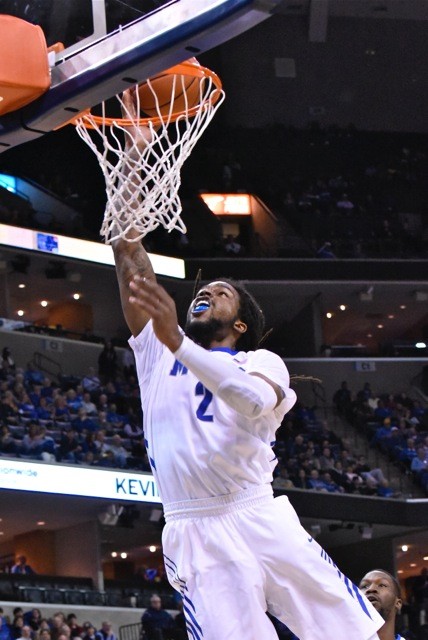 Larry Kuzniewski
Larry Kuzniewski 
 Larry Kuzniewski
Larry Kuzniewski  Larry Kuzniewski
Larry Kuzniewski 
 Larry Kuzniewski
Larry Kuzniewski  Joe Murphy
Joe Murphy  Larry Kuzniewski
Larry Kuzniewski  Larry Kuzniewski
Larry Kuzniewski 